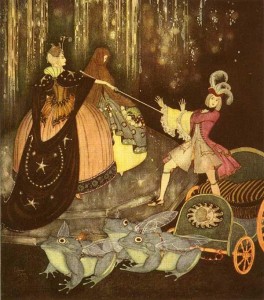 I can’t tell you how excited I am to have the totally awesome Sarah Blake as my guest today. Sarah is a playwright, theatre director and story teller, and founder of Cabinets of Curiosity. I had the pleasure of seeing Sarah’s fabulous play, Five Clever Courtesans, in London before it toured the Edinburgh Fringe, the Brighton Fringe and the HoffART Theatre in Germany. Most recently I’ve enjoyed her wonderful Fairy Tales for Adults, giving a whole different view on Happy Ever After and the story behind the stories. An audiobook of her trilogy of Fairy Tales For Grown Ups is now available to download worldwide from Amazon, iTunes and Audible. For further information, visit: www.soundscurious.net
I can’t tell you how excited I am to have the totally awesome Sarah Blake as my guest today. Sarah is a playwright, theatre director and story teller, and founder of Cabinets of Curiosity. I had the pleasure of seeing Sarah’s fabulous play, Five Clever Courtesans, in London before it toured the Edinburgh Fringe, the Brighton Fringe and the HoffART Theatre in Germany. Most recently I’ve enjoyed her wonderful Fairy Tales for Adults, giving a whole different view on Happy Ever After and the story behind the stories. An audiobook of her trilogy of Fairy Tales For Grown Ups is now available to download worldwide from Amazon, iTunes and Audible. For further information, visit: www.soundscurious.net
Welcome, Sarah! Do tell!
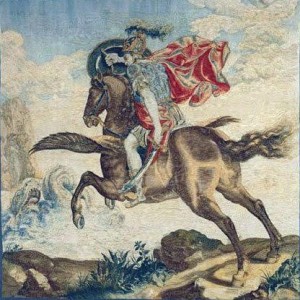 “Some day, my prince will come,
“Some day, my prince will come,
Some day, I’ll find my love
And how thrilling that moment will be!
When the prince of my dreams comes to me!”
So Snow White sings, in the Disney version of Snow White and the Seven Dwarves. The lyrics are simple, yet potent – in one short verse, they seem to echo back all the wistfulness and longing that we feel when we are waiting for… what, exactly?
Who, precisely, is this Prince of our Dreams? And why, even now, is he still seen as a shortcut to a happy ending?
The Prince is a standard figure in most fairy tales – and in stories that have a female protagonist (such as Cinderella, Snow White, Beauty and the Beast, or Sleeping Beauty), he is the ultimate goal – both the readers and the heroine know she has made it to happy-ever-after, once she has met and married him. But even outside the fairytale world, the figure of the Prince pervades contemporary folk and pop-culture genres – rom-com films, romantic novels and tv dramas are full of him. He remains the ultimate symbol of wish-fulfillment, and with the exception of a few surface tweaks, his persona has changed very little over the past few decades, in spite of the rise of feminism. So why does he persist? What drives contemporary storytellers – as well contemporary audiences – to continue to conflate the Prince with happy ever after?
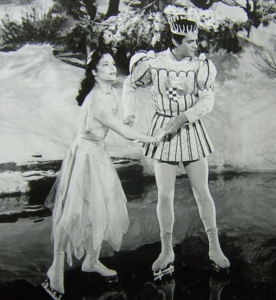 The psychologist Carl Jung theorised that all standard fairy tale characters (or ‘archetypes’) – such as the Prince, the Witch, the Stepmother, etc. – actually represent aspects of our subconscious selves. Viewed in this way, every story can be seen as the reflection of a person – and the interplay and conflict that occurs between the characters within the story mirrors the interplay and conflict that occurs within our own minds, as our subconscious traits and desires vie for dominance. In Jungian terms, the Prince/Hero archetype represents our desire to seek out a better way of life and find greater fulfillment – but practically-speaking, what does this mean?
The psychologist Carl Jung theorised that all standard fairy tale characters (or ‘archetypes’) – such as the Prince, the Witch, the Stepmother, etc. – actually represent aspects of our subconscious selves. Viewed in this way, every story can be seen as the reflection of a person – and the interplay and conflict that occurs between the characters within the story mirrors the interplay and conflict that occurs within our own minds, as our subconscious traits and desires vie for dominance. In Jungian terms, the Prince/Hero archetype represents our desire to seek out a better way of life and find greater fulfillment – but practically-speaking, what does this mean?
Forget the fairy tales for a moment – in reality, for hundreds of years, women had no right to work, own money or property, or to engage in politics and vote. In other words, they had no power over their own fates whatsoever. The only way they could attain any degree of influence, privilege, security, comfort, or social status was by marrying well – and so
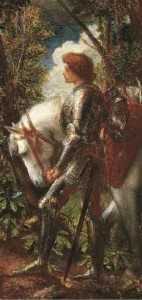 literally, marrying the Prince (or the closest you could get to one) was your only chance to better your circumstances – both practically, in the material sense of having more wealth and security, but also personally, because society judged your worth by your husband – and all too often, society’s external judgements were (and continue to be) internalised within women’s own minds.
literally, marrying the Prince (or the closest you could get to one) was your only chance to better your circumstances – both practically, in the material sense of having more wealth and security, but also personally, because society judged your worth by your husband – and all too often, society’s external judgements were (and continue to be) internalised within women’s own minds.
Today, women can and do seek independence. They can make their own fortunes and fulfill their own destinies. They can, theoretically, do anything a man can. Yet we still live in a patriarchal society. Any cursory glance at employment figures (where there is still a huge wage gap between men and women), the justice system (where the majority of female victims of sexual violence still see their attackers walk free), or the media (which still focuses unrelentingly on how women look, rather than on their characters or achievements) quickly demonstrates the inequality that still exists. So, too, do those societal judgements of women and the corresponding internalisations of self-worth that such judgements foster. And so, within a patriarchal society, the Prince remains an external symbol of internal desire, especially for women – because he represents a degree of privilege and freedom that most women can still only dream of. No matter how handsome he may be, it is rarely the Prince himself who is truly yearned for… rather, the privileges of liberty, autonomy and self-esteem that go along with him.
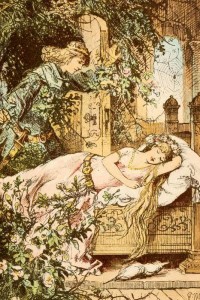 The potency of the Prince as a representation of female desire is particularly heightened when we think of him in terms of romantic/sexual fulfillment. Even now, in our far less repressed age, women are still judged for their sexual appetites. They are frequently condemned as ‘sluts’ or ‘whores’ if they exercise their right to sexual liberty, or express their sensuality on their own terms – whereas similar behaviour in their male counterparts is often approved of by society at large, or merely shrugged off with an indulgent “boys will be boys” attitude. Women’s erotic lives are still all too often parcelled up with being looked at – being seen to be desirable, rather than having the autonomy and freedom to enjoy what feels desirable. So the Prince can also represent a woman’s license to roam freely, explore extensively and and enjoy (without fear of judgement) any and every erotic fantasy she can conjure. As long as an imbalance of power continues to exist between men and women, the Prince will always be there, representing a woman’s yearning for empowerment.
The potency of the Prince as a representation of female desire is particularly heightened when we think of him in terms of romantic/sexual fulfillment. Even now, in our far less repressed age, women are still judged for their sexual appetites. They are frequently condemned as ‘sluts’ or ‘whores’ if they exercise their right to sexual liberty, or express their sensuality on their own terms – whereas similar behaviour in their male counterparts is often approved of by society at large, or merely shrugged off with an indulgent “boys will be boys” attitude. Women’s erotic lives are still all too often parcelled up with being looked at – being seen to be desirable, rather than having the autonomy and freedom to enjoy what feels desirable. So the Prince can also represent a woman’s license to roam freely, explore extensively and and enjoy (without fear of judgement) any and every erotic fantasy she can conjure. As long as an imbalance of power continues to exist between men and women, the Prince will always be there, representing a woman’s yearning for empowerment.
I would suggest that, for many women who sigh after a Prince-type hero – be it onscreen in a Disney 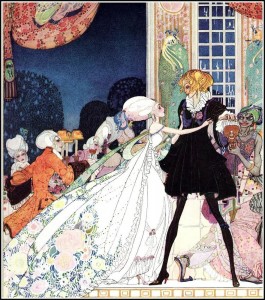 film, or within the pages of a romantic novel – what they are actually sighing for is autonomy and self-fulfillment. It might be sexual fulfillment, or intellectual, or economic, or social, or spiritual – or all of the above. The specific details of the desire don’t matter, so much as the desire itself. Whatever a woman yearns for, or feels is lacking in her life – freedom, self-knowledge, self-esteem, romance, adventure, recognition, a sense of connection – is what the Prince is there to provide. Historically, that has always been his role. And psychologically – while we continue to live within a patriarchal society – it remains so.
film, or within the pages of a romantic novel – what they are actually sighing for is autonomy and self-fulfillment. It might be sexual fulfillment, or intellectual, or economic, or social, or spiritual – or all of the above. The specific details of the desire don’t matter, so much as the desire itself. Whatever a woman yearns for, or feels is lacking in her life – freedom, self-knowledge, self-esteem, romance, adventure, recognition, a sense of connection – is what the Prince is there to provide. Historically, that has always been his role. And psychologically – while we continue to live within a patriarchal society – it remains so.
Viewed in this light, it’s easy to see why the Prince remains such a popular figure. However, this perspective also highlights the hazards for women who seek the fulfillment of all their desires through a literal prince – as well as for the men who find themselves unwittingly cast in that role. Whether you are male or female, patriarchal 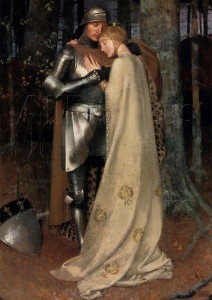 expectations can place you in a trap, because the Prince was never meant to be real. He is an internal figure – an aspect of your own psyche – and finding your happy ending has as much to do with discovering and developing his characteristics within your own personality, as it has with finding another person to love. For far too long, women have been raised and encouraged by popular culture to view the Prince as a real, flesh-and-blood alpha male, who will swoop in and rescue them from all their troubles and worries. This is not only patronising to women, it is also extremely hard on men – after all, why should one flawed, fragile human be made to carry the full burden of another’s every hope and expectation?
expectations can place you in a trap, because the Prince was never meant to be real. He is an internal figure – an aspect of your own psyche – and finding your happy ending has as much to do with discovering and developing his characteristics within your own personality, as it has with finding another person to love. For far too long, women have been raised and encouraged by popular culture to view the Prince as a real, flesh-and-blood alpha male, who will swoop in and rescue them from all their troubles and worries. This is not only patronising to women, it is also extremely hard on men – after all, why should one flawed, fragile human be made to carry the full burden of another’s every hope and expectation?
Fortunately, fairy tales can provide us with a way past these traps and hazards. When viewed symbolically, what they teach us – at their deepest level – is that romance is only one aspect of joyful fulfillment and, ultimately, the only person who can rescue you, fulfill all your deepest desires and give you your happy ending is… yourself.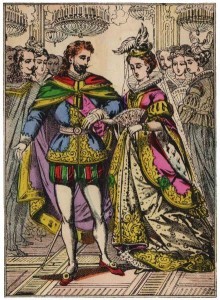
This is the premise behind the three fairy tales in my own trilogy of stories – Fairy Tales For Grown Ups. The clue is in the title – they are stories for those of us who have been around the block a few times and are genuinely ready to help ourselves to a more balanced and fulfilling life. In some ways, they are very traditional tales – full of comedy, adventure, wit and, yes, even romance… fear not – the happy endings are still there! But I’ve also written these tales from a perspective of conscious awareness – so as well as serving to entertain, they can also be used as lights to illuminate the dark places in your mind and heart… and light up your path, as you venture forth into the deep forest.
Which path you decide to take, once you enter the forest, is up to you – and perhaps, like many a fairy tale heroine, you’ll discover that the path you choose end ups taking you somewhere completely unexpected. But whatever it is that you are wishing for – and no matter how you decide to pursue that wish – fairy tales are there to help you along your path. So is the Prince. He is waiting within you, ready to set forth on a perilous journey and brave unknown hazards, in order to find and fulfill your heart’s desire (whatever that might be). So, saddle up… and get ready for the quest of you life.
About Sarah Blake: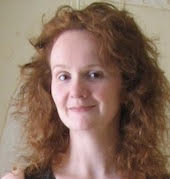
Sarah Blake is a playwright, theatre director and storyteller. An audiobook of her trilogy of enchanted stories – Fairy Tales For Grown Ups – is available to download worldwide from Amazon, iTunes and Audible. For further information, visit: www.soundscurious.net
I generally see the Prince in most of those stories as more of a prize than a character. A reward for the trouble endured. Personally, now I’m curious what you think of the Princess. Not as a protagonist bur as she appears in some male-led tales like the ones about Jack. She tends to serve much the same role as your average Prince.
Yes, I would say so – she is the prize to be won, and therefore she represents the abstract desires of the male protagonist, whatever they may be. It’s interesting, however, to see how Jung categorized those desires based on gender – while the Prince is seen as the seeker of fulfilment and a quester for a better life, the princess is seen as a representation of internal innocence and playfulness. Partly, I think this is due to the time Jung was living in – he was as much influenced by the society around him as anyone else, so he assigned the softer qualities of innocence and playfulness to the feminine, and the more dynamic qualities of questing and adventure to the masculine. Given that we still live in a society that is inherited from Jung’s era (i.e. still a patriarchy, albeit a more self-aware one), it’s probably still the case that the majority of women raised in that patriarchy need to find their inner strength and sense of adventure, while the majority of men raised in the same patriarchy probably need to connect to their inner sense of joy and innocence, to find emotional balance, respectively. However, in the long-term, as we gradually achieve balance in society, I’d like to think that such qualities won’t necessarily be viewed as ‘male’ and ‘female’… just aspects of personality that need to be balanced with each other within the individual. However, for now both the Prince and the Princess can serve a helpful psychological function, in connecting us to what is lacking in our emotional make-up.